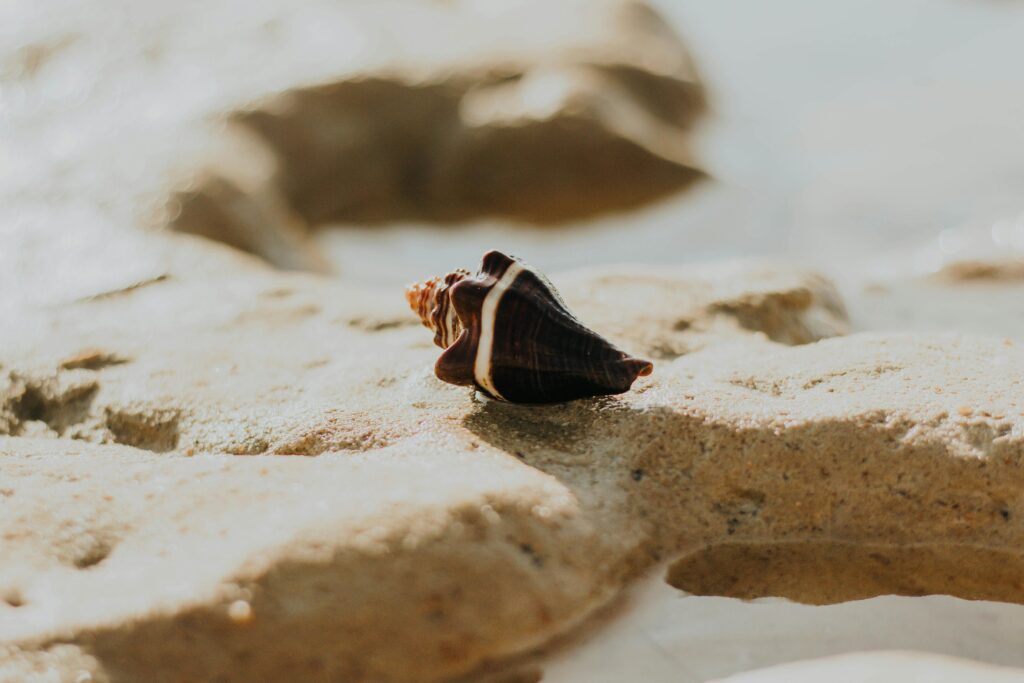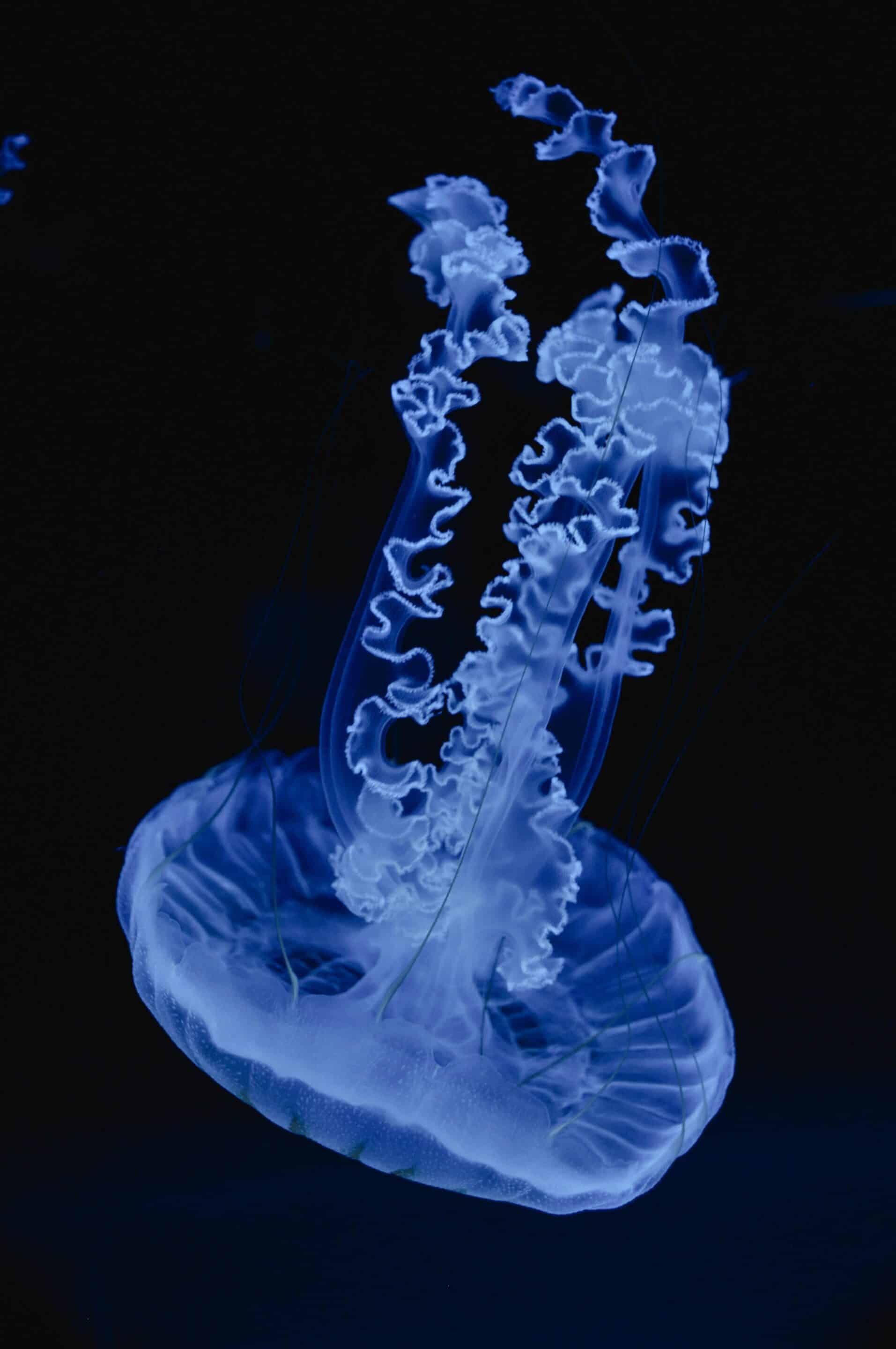Are you an animal lover who is passionate about wildlife conservation? If so, then this comprehensive guide is perfect for you! In this article, we will explore the incredible world of wildlife rehabilitation centers in Costa Rica. Whether you’re a beginner or someone with experience in this field, this guide will provide you with all the essential information you need to know about these centers. From the diverse range of species they care for to the important work they do in rehabilitating and releasing animals back into their natural habitat, you’ll discover the incredible efforts being made to protect and conserve Costa Rica’s rich biodiversity. So, get ready to embark on a captivating journey as we delve into the world of wildlife rehabilitation centers in Costa Rica!

Understanding Wildlife Rehabilitation Centers
Wildlife Rehabilitation Centers are facilities that provide care and treatment to injured, sick, or orphaned wildlife. Their main purpose is to rescue, rehabilitate, and release animals back into their natural habitat. These centers play a crucial role in the conservation and protection of Costa Rica’s unique wildlife species.
Definition and Purpose of Wildlife Rehabilitation Centers
Wildlife Rehabilitation Centers are dedicated to providing medical treatment, nourishment, and long-term care for injured or displaced animals. These centers aim to restore the health and well-being of wildlife and ultimately return them to the wild. The goal is to minimize the impact of human interference on the natural environment and contribute to the preservation of Costa Rica’s biodiversity.
Importance of Wildlife Rehabilitation to Costa Rica’s Environment
Costa Rica is known for its rich biodiversity, with vast rainforests and a wide variety of animal species. Wildlife Rehabilitation Centers are essential in maintaining this delicate balance by rescuing and rehabilitating animals that have been affected by human activities, such as habitat destruction, hunting, and climate change. These centers contribute to the conservation efforts and help preserve the natural beauty of Costa Rica for future generations.
Species Often Taken Care Of in These Centers
Wildlife Rehabilitation Centers in Costa Rica cater to a diverse range of species, from small mammals to large birds and reptiles. Some common species that are often taken care of include sloths, toucans, monkeys, jaguars, sea turtles, and various species of parrots. These centers have specialized facilities and experienced staff who provide the necessary care and support for each unique species, ensuring their successful rehabilitation and eventual release.
Legal Framework
Costa Rica has established legal provisions to regulate and govern the operations of Wildlife Rehabilitation Centers. These provisions ensure that the facilities meet specific standards and guidelines to guarantee the well-being of the animals under their care. The country has also aligned its laws with international agreements such as the Convention on International Trade in Endangered Species of Wild Fauna and Flora (CITES) to further protect wildlife.
Costa Rica’s Legal Provisions Regarding Wildlife Rehabilitation
Costa Rica’s legal framework regarding wildlife rehabilitation centers is primarily governed by its Wildlife Conservation Law. This law outlines the regulations for capturing, transporting, and rehabilitating wildlife. It sets standards for the facilities, their operations, and the qualification of the personnel involved. Compliance with these provisions is crucial for the centers to receive authorization and operate legally.

International Laws Affecting Wildlife Rehabilitation in Costa Rica
In addition to its internal legal provisions, Costa Rica is also bound by various international treaties and agreements regarding wildlife conservation. CITES, as mentioned earlier, plays a significant role in regulating the trade of endangered species and ensuring their protection. The country’s wildlife rehabilitation centers must adhere to the guidelines and restrictions imposed by CITES to contribute to the global efforts to preserve endangered wildlife.
The Rehabilitation Process
The rehabilitation process at wildlife rehabilitation centers can be divided into several stages: rescue, initial assessment and treatment, long-term care and rehabilitation, and preparation for release back into the wild. Each stage is crucial for the successful recovery and eventual release of the animals under the center’s care.
Rescue of Injured or Displaced Animals
The first step in the rehabilitation process is the rescue of injured or displaced animals. Wildlife rehabilitation centers often work closely with local communities, wildlife organizations, and government agencies to respond to reports of injured or distressed animals. Highly trained staff and volunteers are dispatched to safely capture and transport the animals to the center for immediate care.

Initial Assessment and Treatment
Upon arrival at the center, the rescued animals undergo a comprehensive assessment to determine the extent of their injuries or health issues. This assessment allows the rehabilitators to create an individualized treatment plan that includes veterinary care, medication, and specialized diets tailored to each species’ needs. The constant monitoring of the animals’ progress is crucial during this stage.
Long-term Care and Rehabilitation
Once the initial treatment is completed, animals that require long-term care are provided with specialized enclosures or habitats that mimic their natural environment as closely as possible. The centers ensure that the animals have access to appropriate food, enrichment activities, and veterinary care to aid in their physical and emotional recovery. During this stage, the animals gradually regain their strength and adapt to their surroundings.
Preparation for Release Back Into the Wild
As the animals near full recovery, wildlife rehabilitation centers focus on preparing them for release back into the wild. This process involves gradually reintroducing them to their natural habitat, ensuring they can forage for food, exhibit natural behaviors, and interact with others of their species. The release process is carefully planned and monitored to maximize the animals’ chances of successful reintegration into their natural ecosystems.
Famous Wildlife Rehabilitation Centers in Costa Rica
Costa Rica is home to several renowned wildlife rehabilitation centers, each playing a crucial role in rehabilitating and preserving the country’s wildlife. Let’s explore some of these centers and the unique work they do:
Rescate Wildlife Rescue Center
Rescate Wildlife Rescue Center, located in the heart of Costa Rica’s rainforest, is dedicated to the rescue, rehabilitation, and release of a wide variety of injured or orphaned animals. The center focuses on providing specialized care for sloths, toucans, and monkeys. Rescate actively promotes community engagement and education through various programs and initiatives.
Jaguar Rescue Center
Nestled in Puerto Viejo de Talamanca, the Jaguar Rescue Center specializes in the rehabilitation of small wild cats, monkeys, sloths, and other exotic species. The center’s dedicated team works tirelessly to rescue animals affected by deforestation, poaching, and the illegal pet trade. Visitors can take guided tours to learn about the center’s conservation efforts and witness the rehabilitation process firsthand.
The Sloth Institute Costa Rica
The Sloth Institute, situated in Manuel Antonio, focuses primarily on the rehabilitation and conservation of sloths. This unique center conducts groundbreaking research, educates the public about sloth conservation, and advances the understanding and care of sloths in rehabilitation. Visitors can participate in educational tours and get an up-close look at these charismatic animals.
Alturas Wildlife Sanctuary
Alturas Wildlife Sanctuary, located near Dominical, provides a safe haven for injured, orphaned, or confiscated wildlife. The sanctuary offers rehabilitation programs for a wide range of animals, including monkeys, sloths, birds, and reptiles. The center emphasizes the importance of environmental education and actively collaborates with local schools and communities to raise awareness about wildlife conservation.
Services Offered By The Centers
Wildlife rehabilitation centers offer a range of essential services to ensure the well-being and successful recovery of the animals under their care. These services include medical care, rehabilitation programs, educational programs, and volunteer opportunities.
Medical Services
Wildlife rehabilitation centers provide comprehensive medical care to injured and sick animals. Highly skilled veterinarians and staff administer treatments, perform surgeries, and monitor the animals’ progress. Medical services include wound care, diagnostics, medication administration, and nutritional support tailored to the animals’ specific needs.
Rehabilitation Services
The primary goal of rehabilitation services is to help injured or orphaned animals regain their strength, physical abilities, and natural behaviors. This involves creating specialized enclosures or habitats that closely resemble the animals’ natural environment. Rehabilitation programs include physical therapy, behavioral enrichment, socialization exercises, and nutritional management.
Educational Programs
Many wildlife rehabilitation centers in Costa Rica offer educational programs designed to raise awareness about wildlife conservation and environmental preservation. These programs, which cater to both locals and tourists, include guided tours, workshops, lectures, and interactive experiences. By educating the public, these centers aim to foster a greater understanding and appreciation for Costa Rica’s unique wildlife.
Volunteer Opportunities
Wildlife rehabilitation centers offer valuable opportunities for individuals to volunteer and actively contribute to wildlife conservation efforts. Volunteers assist with animal care, enclosure maintenance, feeding, and cleaning. This hands-on experience allows volunteers to learn about wildlife rehabilitation and make a meaningful impact on the animals’ lives.
Volunteering at Wildlife Rehabilitation Centers
Volunteering at wildlife rehabilitation centers in Costa Rica is an incredibly rewarding experience. By dedicating your time and skills, you can actively contribute to the conservation and protection of the country’s wildlife. Here’s a guide on how to become a volunteer and the role you can play.
How to Become a Volunteer
To become a volunteer at a wildlife rehabilitation center, you typically need to fill out an application form and undergo an interview process. Some centers may require a background check or additional certifications, depending on the nature of the volunteer work involved. It is important to research and reach out to the centers in advance to understand their specific requirements and availability.
The Role of a Volunteer
As a volunteer, you will have the opportunity to work closely with the center’s staff and contribute to the daily operations of the facility. Your responsibilities may include animal feeding, enclosure cleaning, assisting with medical treatments, and providing enrichment activities for the animals. Your role as a volunteer is crucial in ensuring the well-being and successful rehabilitation of the animals.
Benefits of Volunteering at Wildlife Rehabilitation Centers
Volunteering at wildlife rehabilitation centers offers numerous benefits. Firstly, you get to make a positive impact on the lives of injured or orphaned animals and contribute to their successful rehabilitation. Secondly, you gain valuable hands-on experience working with wildlife and acquire new skills in animal care and rehabilitation. Additionally, volunteering provides a unique opportunity to connect with like-minded individuals who share a passion for wildlife conservation.
Adopting An Animal From The Centers
Adopting an animal from a wildlife rehabilitation center is an extraordinary way to support their efforts and provide a forever home for an animal in need. Here’s an overview of the adoption process and the reasons why adopting from these centers is a meaningful choice.
Process of Adoption
The adoption process usually begins with an initial application form, where potential adopters express their interest in providing a home for a specific animal. Wildlife rehabilitation centers carefully review each application to ensure the adopter can meet the specific needs of the animal. Once approved, the adopter goes through a comprehensive orientation and is guided through the adoption process, including signing legal documents and paying adoption fees.
Why Adopt an Animal From a Wildlife Rehabilitation Center
Adopting an animal from a wildlife rehabilitation center not only provides a loving home for the animal but also supports the ongoing efforts of the center. By adopting, you contribute directly to the center’s rescue and rehabilitation programs, allowing them to continue their vital work. Furthermore, adopting from these centers often includes post-adoption support, educational resources, and the satisfaction of knowing you’re making a positive impact on the life of an animal.
Stories of Successful Adoptions
Many heartwarming stories of successful adoptions from wildlife rehabilitation centers in Costa Rica showcase the positive outcomes of providing a forever home to an animal in need. Adopters have shared stories of their beloved pets thriving in their new environment and how the adoption has brought immense joy and fulfillment to their lives. These stories serve as testimonials to the positive impact of adoption and inspire others to consider this meaningful choice.
Impact of Wildlife Rehabilitation Centers
Wildlife Rehabilitation Centers have a significant impact on various aspects of Costa Rica’s ecosystem, local communities, and tourism industry. Let’s explore the far-reaching benefits these centers provide.
Benefits of Wildlife Rehabilitation Centers to Environmental Conservation
By rescuing and rehabilitating injured wildlife, these centers contribute to the overall conservation efforts in Costa Rica. Their work helps preserve endangered species and restore the natural balance of ecosystems. Additionally, the centers provide valuable research opportunities, which contribute to a deeper understanding of animal behavior, rehabilitation methodologies, and conservation strategies.
Impact on Local Communities
Wildlife rehabilitation centers often collaborate with local communities, schools, and organizations to raise awareness about wildlife conservation. They offer educational programs, workshops, and outreach initiatives, fostering a sense of environmental responsibility and stewardship among the local population. These centers also generate employment opportunities, providing a source of income for individuals residing in rural areas.
Role in Costa Rica’s Tourism Industry
Costa Rica’s pristine natural beauty and abundant wildlife attract a significant number of tourists each year. Wildlife rehabilitation centers enhance the country’s appeal as a sustainable tourism destination. Visitors have the opportunity to witness the rehabilitation process, interact with rescued animals, and learn about conservation efforts. The revenue generated through these tourism activities directly supports the operations of the centers and contributes to their long-term sustainability.
How to Support Wildlife Rehabilitation Centers
There are several ways individuals can support wildlife rehabilitation centers in their crucial work of protecting and rehabilitating Costa Rica’s wildlife.
Donations
One of the most effective ways to support wildlife rehabilitation centers is through monetary donations. These donations help fund the centers’ operations, animal care, and medical treatments. Individuals can make one-time donations or become monthly supporters. By contributing financially, you directly contribute to the welfare and recovery of the animals.
Participation in Events and Fundraisers
Wildlife rehabilitation centers regularly organize fundraising events and campaigns. By participating in these events, such as charity runs, auctions, or galas, individuals can contribute to the centers’ fundraising efforts. These events allow the community to come together, learn more about wildlife rehabilitation, and actively support the cause.
Purchasing Merchandise
Many wildlife rehabilitation centers offer merchandise such as t-shirts, mugs, or calendars featuring images of the rescued animals. By purchasing these items, individuals not only receive a unique souvenir but also directly support the centers. The revenue generated through merchandise sales contributes to the ongoing care and rehabilitation of the animals.
Promoting Awareness and Education
Individuals can also support wildlife rehabilitation centers by promoting awareness and education about wildlife conservation. This can be done through social media advocacy, sharing educational resources, and encouraging others to visit and support the centers. By spreading the message about the importance of wildlife rehabilitation, individuals play a crucial role in expanding the reach and impact of these centers.
Future of Wildlife Rehabilitation Centers in Costa Rica
Wildlife rehabilitation centers in Costa Rica face a unique set of challenges while striving to improve their operations and contribute to the country’s conservation efforts. Let’s explore the future prospects, plans, and long-term goals for wildlife rehabilitation programs.
Challenges Faced by These Centers
Costa Rica’s wildlife rehabilitation centers face challenges such as limited funding, resource constraints, and increasing demand for their services. The centers often operate on limited budgets, relying heavily on donations and grants. Expanding their facilities, hiring qualified personnel, and maintaining high standards of care remain ongoing challenges. Additionally, climate change and habitat loss pose new threats, requiring the centers to adapt and develop innovative approaches.
Plans and Projects for Improvement
To overcome these challenges, wildlife rehabilitation centers in Costa Rica continuously seek opportunities for improvement. They engage in partnerships with local and international organizations, participate in research collaborations, and advocate for stricter wildlife protection laws. The centers actively pursue grant funding and engage in fundraising efforts to expand their infrastructure, improve animal care facilities, and enhance their overall capabilities.
Long-Term Goals for Costa Rica’s Wildlife Rehabilitation Programs
The long-term goals for Costa Rica’s wildlife rehabilitation programs include strengthening collaboration between centers, developing standardized protocols, and expanding public outreach and education initiatives. By working together, the centers aim to create a more comprehensive network that can respond efficiently to wildlife emergencies and conserve endangered species effectively. The centers also aim to develop sustainable funding models to ensure the continuity of their operations and maximize their impact on wildlife conservation.
In conclusion, wildlife rehabilitation centers in Costa Rica play a crucial role in rescuing, rehabilitating, and releasing injured or orphaned animals. They adhere to legal provisions and international agreements to protect and conserve wildlife. The rehabilitation process involves rescue, assessment, long-term care, and release back into the wild. Famous centers like the Rescate Wildlife Rescue Center, Jaguar Rescue Center, The Sloth Institute Costa Rica, and Alturas Wildlife Sanctuary provide medical services, rehabilitation programs, educational initiatives, and volunteer opportunities. Adopting an animal from these centers supports their ongoing efforts and has positive impacts on the environment, local communities, and the tourism industry. Supporting wildlife rehabilitation centers through donations, participation in events, purchasing merchandise, and promoting awareness is crucial. Despite challenges, these centers strive to improve and achieve long-term goals to continue their vital work in preserving Costa Rica’s unique wildlife.







0 Comments